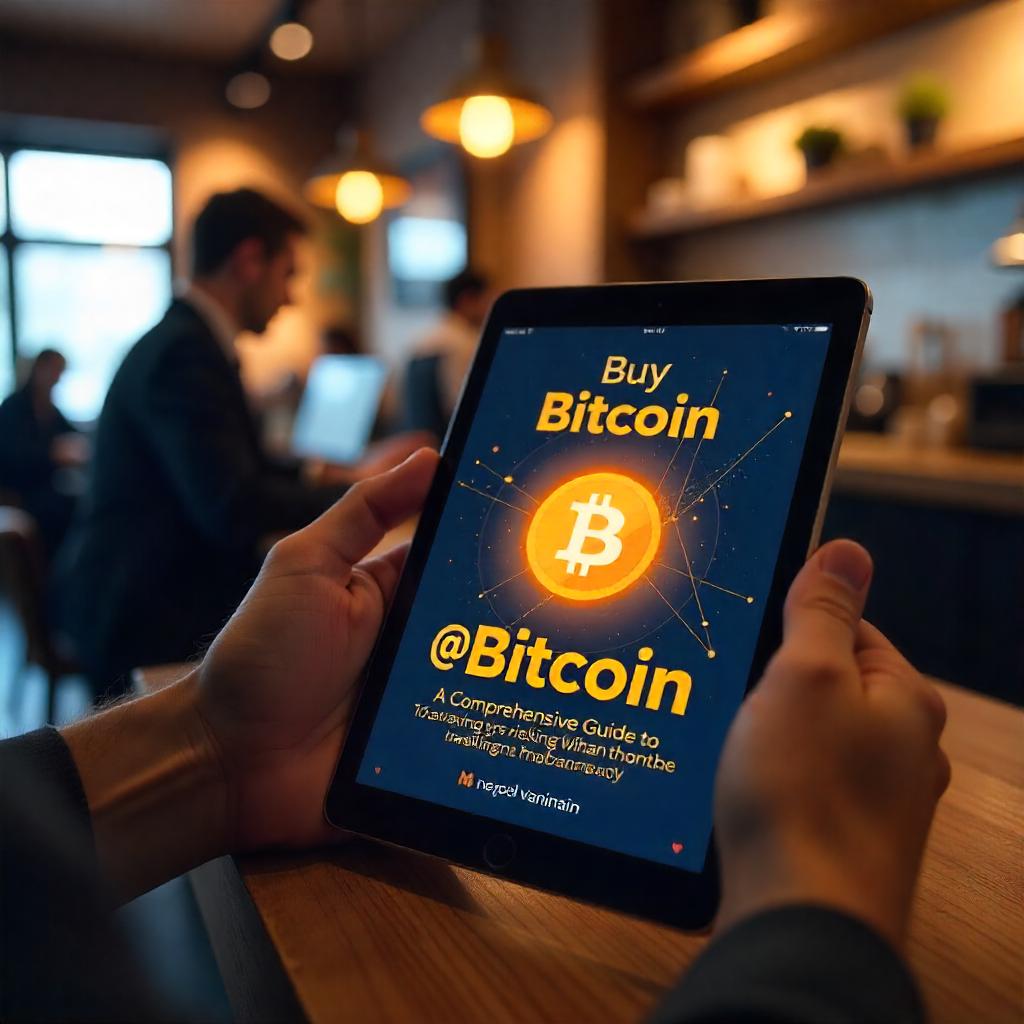Introduction
In the rapidly evolving world of finance, Bitcoin has emerged as a revolutionary force, transforming how we think about money and investment. As the first cryptocurrency, Bitcoin has gained immense popularity and recognition since its inception in 2009. With its decentralized nature and potential for high returns, many individuals are now looking to buy Bitcoin as a part of their investment strategy. This comprehensive guide will delve deep into the concept of Bitcoin, its history, the reasons for buying it, the process of purchasing it, storage options, trading strategies, risks involved, and the future outlook for Bitcoin.

Table of Contents
- What is Bitcoin?
- The History of Bitcoin
- Why Buy Bitcoin?
- 3.1. Investment Potential
- 3.2. Hedge Against Inflation
- 3.3. Portfolio Diversification
- How to Buy Bitcoin
- 4.1. Choosing a Cryptocurrency Exchange
- 4.2. Setting Up an Account
- 4.3. Buying Your First Bitcoin
- Storage Options for Bitcoin
- 5.1. Hot Wallets
- 5.2. Cold Wallets
- Trading Bitcoin: Strategies and Tips
- 6.1. HODLing
- 6.2. Day Trading
- 6.3. Dollar-Cost Averaging
- Risks and Challenges of Buying Bitcoin
- 7.1. Market Volatility
- 7.2. Security Risks
- 7.3. Regulatory Risks
- The Future of Bitcoin
- FAQs
- Conclusion
- References
1. What is Bitcoin?
Bitcoin is a decentralized digital currency that allows for peer-to-peer transactions without the need for intermediaries like banks. It operates on a technology called blockchain, which is a public ledger of all transactions made with Bitcoin. This technology ensures transparency, security, and immutability of transaction records.
Key Features of Bitcoin:
- Decentralization: Bitcoin is not controlled by any central authority, making it resistant to censorship and fraud.
- Limited Supply: The total supply of Bitcoin is capped at 21 million coins, making it a deflationary asset.
- Anonymity: Transactions can be made without revealing personal information, although all transactions are recorded on the blockchain.

2. The History of Bitcoin
Bitcoin’s journey began in 2008 when an individual or group under the pseudonym Satoshi Nakamoto published a white paper titled “Bitcoin: A Peer-to-Peer Electronic Cash System.” The first Bitcoin was mined in January 2009, marking the beginning of the cryptocurrency era.
Milestones in Bitcoin’s History:
- 2009: Bitcoin mining begins, and the first block (the Genesis Block) is mined by Satoshi Nakamoto.
- 2010: The first real-world transaction occurs when a programmer pays 10,000 BTC for two pizzas.
- 2013: Bitcoin reaches $1,000 for the first time, attracting media attention and public interest.
- 2017: Bitcoin experiences a massive bull run, reaching nearly $20,000 in December.
- 2020: Bitcoin sees unprecedented growth, surpassing its previous all-time high and gaining institutional interest.
3. Why Buy Bitcoin?
As more people recognize the potential of Bitcoin, the reasons for purchasing it have become increasingly compelling. Here are some of the primary motivations for buying Bitcoin:
3.1. Investment Potential
One of the most significant reasons to buy Bitcoin is its potential for high returns. Over the years, Bitcoin has demonstrated remarkable price appreciation, making it an attractive investment for those looking to grow their wealth. Early adopters who bought Bitcoin when it was priced at a few cents have seen astronomical returns, with the price reaching tens of thousands of dollars per coin.
3.2. Hedge Against Inflation
In times of economic uncertainty and rising inflation, many investors look for assets that can preserve their purchasing power. Bitcoin, with its limited supply, is often referred to as “digital gold.” It offers a hedge against inflation as its scarcity ensures that it cannot be devalued in the same way that fiat currencies can.
3.3. Portfolio Diversification
Adding Bitcoin to an investment portfolio can provide diversification benefits. As a non-correlated asset, Bitcoin’s price movements do not necessarily align with traditional assets like stocks and bonds. By including Bitcoin in a portfolio, investors can potentially reduce overall risk and enhance returns.
4. How to Buy Bitcoin
Buying Bitcoin may seem daunting at first, but the process is relatively straightforward. Here’s a step-by-step guide to purchasing Bitcoin:

4.1. Choosing a Cryptocurrency Exchange
The first step in buying Bitcoin is selecting a cryptocurrency exchange. Several exchanges are available, each with its unique features and benefits. Some popular options include:
- Coinbase: Known for its user-friendly interface, Coinbase is an excellent choice for beginners. It allows users to buy Bitcoin and other cryptocurrencies easily.
- Binance: Binance is one of the largest cryptocurrency exchanges in the world, offering a wide range of cryptocurrencies and trading options.
- Kraken: Kraken is known for its security features and advanced trading tools, making it a favorite among experienced traders.
4.2. Setting Up an Account
Once you have chosen an exchange, you will need to set up an account. Here’s how:
- Register: Sign up on the exchange by providing your email address and creating a password.
- Verify Your Identity: Most exchanges require identity verification to comply with regulations. You may need to upload a government-issued ID and provide personal information.
- Link Your Payment Method: Connect a bank account, credit card, or other payment methods to fund your account.
4.3. Buying Your First Bitcoin
After setting up your account, you can proceed to buy Bitcoin:
- Navigate to the Buy Section: Log into your account and select the option to buy Bitcoin.
- Enter the Amount: Specify how much Bitcoin you want to purchase. You can buy a fraction of a Bitcoin if you don’t want to buy a whole coin.
- Confirm the Purchase: Review the transaction details, including any fees, and confirm your purchase.
Once the transaction is complete, the Bitcoin will be credited to your exchange wallet.
5. Storage Options for Bitcoin
After buying Bitcoin, it’s crucial to store it securely. There are two primary types of wallets for storing Bitcoin: hot wallets and cold wallets.
5.1. Hot Wallets
Hot wallets are online wallets connected to the internet. They are convenient for quick access but are more susceptible to hacks. Examples include:
- Exchange wallets: Most exchanges provide wallets for storing Bitcoin. However, it’s advisable to transfer your Bitcoin to a personal wallet for added security.
- Mobile wallets: Apps like Trust Wallet or Mycelium allow users to store Bitcoin on their mobile devices.
5.2. Cold Wallets
Cold wallets are offline storage solutions that offer enhanced security. They include:
- Hardware wallets: Devices like Ledger or Trezor store your Bitcoin offline, making them less vulnerable to hacks.
- Paper wallets: A paper wallet is a physical printout of your Bitcoin keys. It’s a secure way to store Bitcoin but requires careful handling to avoid loss or damage.

6. Trading Bitcoin: Strategies and Tips
Investing in Bitcoin can be approached in several ways. Here are some strategies to consider:
6.1. HODLing
HODLing is a long-term investment strategy where investors buy Bitcoin and hold it for an extended period, regardless of price fluctuations. This approach is based on the belief that Bitcoin’s value will increase significantly over time.
6.2. Day Trading
Day trading involves buying and selling Bitcoin within short time frames to capitalize on price movements. This strategy requires a good understanding of market trends and technical analysis.
6.3. Dollar-Cost Averaging
Dollar-cost averaging is an investment strategy where investors buy a fixed amount of Bitcoin at regular intervals, regardless of its price. This approach helps mitigate the impact of volatility and reduces the risk of making poor investment decisions based on market timing.
7. Risks and Challenges of Buying Bitcoin
While Bitcoin offers numerous benefits, it also comes with risks that potential investors should be aware of:
7.1. Market Volatility
Bitcoin prices can be highly volatile, with significant price fluctuations occurring within short periods. This volatility can lead to substantial gains or losses, making it crucial for investors to be prepared for price swings.
7.2. Security Risks
Exchanges and wallets can be vulnerable to hacks, resulting in the loss of funds. It’s essential to choose reputable exchanges and implement security measures, such as two-factor authentication and using cold wallets for long-term storage.
7.3. Regulatory Risks
The regulatory landscape for cryptocurrencies is continually evolving. Governments may impose regulations that affect Bitcoin’s legality and use, which can impact its price and adoption.
8. The Future of Bitcoin
The future of Bitcoin remains uncertain, but many experts believe it will continue to grow in adoption and value. Factors influencing Bitcoin’s future include technological advancements, regulatory developments, and market demand.
Potential Developments to Watch:
- Increased Institutional Adoption: As more institutional investors enter the Bitcoin market, it could drive demand and increase prices.
- Technological Improvements: Upgrades to the Bitcoin network, such as the Lightning Network, could enhance scalability and transaction speed.
- Regulatory Clarity: Clear regulations could provide legitimacy to Bitcoin and attract more investors.

9. FAQs
Q1: Is it safe to buy Bitcoin?
Yes, but it’s crucial to use reputable exchanges and secure your Bitcoin in cold wallets to protect against hacks.
Q2: How much Bitcoin should I buy?
It depends on your financial situation and investment goals. Start small and gradually increase your investment as you gain experience.
Q3: Can I buy a fraction of a Bitcoin?
Yes, you can buy as little as $10 worth of Bitcoin; Bitcoin is divisible up to eight decimal places.
Q4: What payment methods can I use to buy Bitcoin?
Most exchanges accept bank transfers, credit cards, and even PayPal in some cases.
Q5: What should I do if I lose my Bitcoin wallet?
If you lose access to your wallet and don’t have a backup of your keys, you may lose your Bitcoin permanently.
10. Conclusion
Buying Bitcoin can be a rewarding investment opportunity, but it requires careful consideration and understanding of the market. By following the steps outlined in this guide, you can confidently navigate the process of purchasing Bitcoin and take your first steps into the world of cryptocurrency. Whether you choose to HODL, trade, or dollar-cost average, being informed and prepared will help you make the most of your Bitcoin investment.
11. References
- Nakamoto, S. (2008). Bitcoin: A Peer-to-Peer Electronic Cash System.
- CoinMarketCap. (2023). Cryptocurrency Market Capitalizations.
- Investopedia. (2023). What Is Bitcoin?
- Coinbase. (2023). How to Buy Bitcoin.
- Kraken. (2023). Bitcoin Trading Guide.


Pingback: Ideas For Small Business: A Comprehensive Guide To Starting Your Entrepreneurial Journey - Info Spher Hub